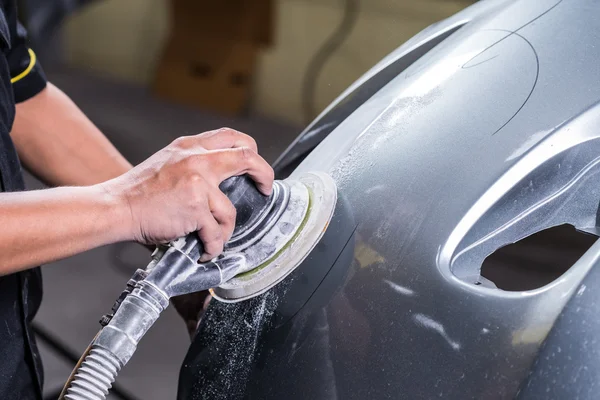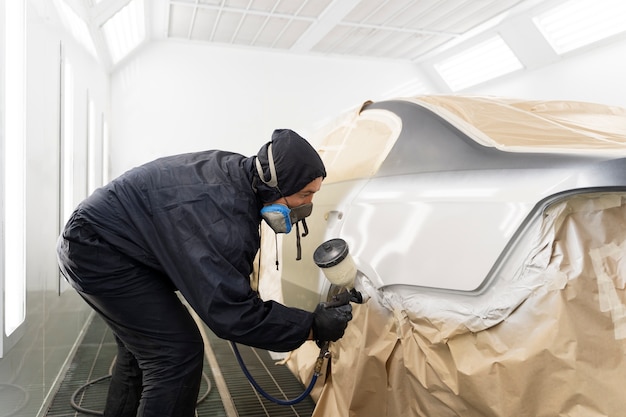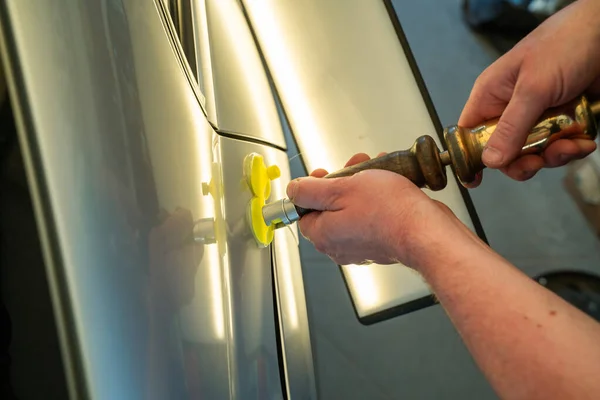Mastering Auto Body Repair: Essential Techniques For Restoring Your Vehicle's Shine
Auto body repair is both an art and a science, involving the meticulous process of restoring a vehicle to its original condition after damage. Whether it's a minor scratch or a major dent, mastering the techniques of auto body repair can ensure that your vehicle not only looks as good as new but also maintains its value. This guide will delve into the essential techniques for achieving a flawless finish and restoring your vehicle's shine.
Understanding the Basics of Auto Body Repair
Before diving into the repair techniques, it's important to understand the basics of auto body repair. This process typically involves several key steps:
- Assessment: Evaluating the extent of the damage to determine the best approach for repair.
- Preparation: Preparing the damaged area by cleaning, sanding, and applying necessary fillers.
- Repair: Addressing the damage with appropriate techniques and materials.
- Finishing: Applying paint and clear coat to match the vehicle’s original appearance.
Assessing the Damage
The first step in any auto body repair process is assessing the damage. Dents and dings refer to small to medium-sized depressions in the bodywork of a vehicle, often resulting from minor collisions or impacts. These imperfections can detract from the vehicle's appearance and, if left untreated, may lead to further damage. Scratches, on the other hand, are surface-level marks that vary in depth; they can be caused by various factors, including debris, abrasive cleaning materials, or minor accidents.
Rust is a more severe issue, as it signifies corrosion that can compromise the metal's integrity over time, potentially leading to structural problems if not addressed promptly. Cracks represent another significant concern, as they indicate structural damage that can affect the vehicle's overall integrity, safety, and performance. Addressing these issues promptly is essential to maintain the vehicle's aesthetic appeal and ensure its long-term durability.
Using tools like a flashlight and magnifying glass can help in identifying the finer details of the damage.
Preparation Techniques
Proper preparation is crucial for achieving a smooth and durable repair. Here are the key steps involved:

Cleaning:
Clean the damaged area thoroughly to remove dirt, grease, and old paint. A degreaser or soap and water can be used for this purpose. Ensure the area is completely dry before proceeding.
Sanding:
Sand the damaged area to remove any rust and create a smooth surface for the repair. Start with coarse-grit sandpaper (around 80-grit) and gradually move to finer-grit sandpaper (up to 320-grit) for a smooth finish. Be sure to feather the edges to blend seamlessly with the surrounding paint.
Applying Fillers:
For dents and dings, use a high-quality auto body filler to fill in the imperfections. Apply the filler in thin layers, allowing each layer to dry completely before applying the next. Once the filler is dry, sand it smooth to match the contours of the vehicle.
Repair Techniques
With the damaged area prepared, it's time to move on to the repair techniques:
Dent Removal:
or minor dents, paintless dent repair (PDR) can be an effective method. This technique involves using specialized tools to push the dent from behind the panel, restoring its original shape without damaging the paint. For more severe dents, a combination of fillers and sanding may be required.

Scratch Repair:
For surface scratches, use a scratch repair kit that includes sandpaper, primer, and touch-up paint. Sand the scratch area lightly, apply primer if necessary, and then carefully apply the touch-up paint. Allow the paint to dry, and then polish the area to blend with the surrounding surface.
Rust Removal:
Rust can be more challenging to address. Start by sanding the rusted area to remove the corrosion. Apply a rust-inhibiting primer to prevent further rusting, followed by a matching paint and clear coat. Regular maintenance and inspections can help prevent rust from reoccurring.
Crack Repair:
Cracks in the bodywork may require more extensive repairs. For minor cracks, use a fiberglass repair kit or plastic repair adhesive. For more significant cracks, it may be necessary to replace the damaged panel or seek professional assistance.
Finishing Touches
Once the repair work is completed, the finishing touches are essential for achieving a flawless appearance:
- Priming: Apply a primer to the repaired area to ensure proper adhesion of the paint. The primer also helps in covering any imperfections and providing a uniform base for the paint.
- Painting: Match the paint color to your vehicle’s original shade. Use high-quality automotive paint and apply it in light, even coats. Allow each coat to dry thoroughly before applying the next.
- Clear Coating: After the paint has dried, apply a clear coat to protect the paint and enhance its shine. The clear coat also helps in blending the new paint with the old, ensuring a seamless finish.
- Polishing: Once the clear coat is fully cured, polish the repaired area to achieve a high gloss finish. Use a soft cloth and a high-quality car polish to remove any imperfections and restore the vehicle's shine.
Additional Tips for a Professional Finish
- Work in a Controlled Environment: Perform repairs in a dust-free environment to prevent contaminants from affecting the finish.
- Use the Right Tools: Invest in quality tools and materials for a more efficient and effective repair process.
- Take Your Time: Rushing through repairs can result in subpar results. Take your time to ensure each step is completed correctly.
Mastering auto body repair involves a combination of skill, technique, and patience. By understanding the basics of repair, properly preparing the damaged area, employing effective repair techniques, and applying finishing touches, you can restore your vehicle to its original shine. Whether you're a DIY enthusiast or a professional technician, these essential techniques will help ensure your vehicle looks and performs at its best.
110 E 43rd St, Suite 120
Garden City, Idaho 83714, USA
Phone: (208)-251-5338

